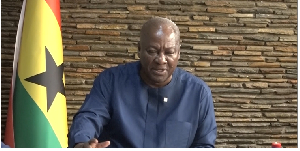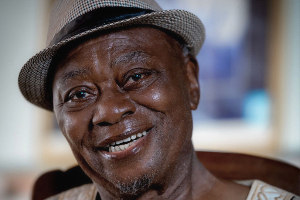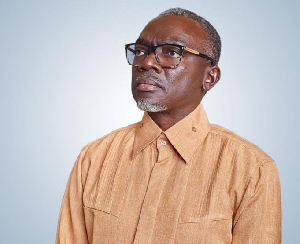Often, when I travel across the country and get the opportunity to interact with employees of other organizations on why they think organizations fail, they were usually very quick to point to the leader or the leadership of the organization as the primary cause of the failure. They even go ahead to share certain personal workplace experiences to substantiate their claim why the leader or leadership was often the prime culprit of organization’s failure and non-performance. But is the leader or leadership really the cause of organizational failure?
This assertion cannot be entirely true. Modern-day leadership often requires collaborative effort from both the leader and the follower in other to succeed. In fact, throughout my years of practicing followership, I have observed that the attitudes or actions of some followers can partly or greatly cause the leader or the organization to fail yet the leader is often made to take full responsibility of the failure. Should it always be so?
Should the follower also be blamed for the failure? I think followers should equally not be blamed for the organization’s failure since their position has often been regarded as inferior and perceived not to require any valuable skills to function effectively as a follower. Hence, the follower lacks the required attitude and understanding of his position as a follower in the organization and what is expected him.
For the purpose of easy understanding and appreciation of this article, kindly permit me to address these basic questions before we proceed: (i) what is leadership? (ii) what is leading? (iii) who is a leader? and (iv) who is a follower? The writer will attempt to explain these key terms within the context of this article since the terms could also be used within different context of exercising leadership.
The term leadership could be explained as a person or group of people who have taken on a position of authority and willing to work together or collaborate with other people known as followers to achieve a common organizational vision, mission, goals and / or objectives. For instance, the leadership of a local government authority in Ghana could be referred to the Metropolitan Municipal District Chief Executive (MMDCE) who is a person or Metropolitan Municipal District Chief Executive (MMDCE), District Coordinating Director (DCD) and sometimes the District Finance Officer (DFO) depending on the situation who are group of persons and often referred to as the tripartite.
However, the act of manifesting leadership is leading. Leading, therefore could be explained as the interaction between the leader and the follower which is aimed at realizing the mission, goals and objectives of the organization.
Other terms worthy of note are ‘leader’ and ‘follower’ since the conversation will be centered on these two actors when it comes to the fulfilling the mandate of any organization, be it public or private organization.
Therefore, a leader could be referred to as someone or group of persons as described above who take up a position of authority and lead together with the followers to achieve the mandate of the organization. Also, Kellerman (2008) defined followers as subordinate employees who have less power, authority and influence than their superiors and who therefore usually but not always fall in line. For instance, followers could be subordinate employees or senior staff working under the leader or leadership.
From the above explanation, it is clear that for effective leadership to take place, it requires the effort of both the leader and the follower. In any organization for instance, the majority of the people are often the followers than leaders but the role of the follower has often been relegated to the background and has not been considered an inherently valuable position or role with a specialized set of skills and influence to enhance organizational potential. The success of organizations has often been viewed through the leader-centric lens and little attention has been paid to those who do not lead.
Just as leading people can be a daunting task, so does following a leader requires a lot of maturity and emotional intelligence on the part of the followers to achieve the desire purpose of the organization. Followership recognizes that followers can be in a position to better understand the day to day events within the organization which lead to cultivating good or effective followers.
Followership could be defined as the willingness to cooperate in working towards the accomplishment of the mission, to demonstrate a high degree of teamwork and to build cohesion among the organization members. Effective followership is an essential building block to effective leadership.
Therefore, this article seeks to highlight and remind followers of their complementary roles in ensuring that the organization achieve its purpose of existence.
This paper adopts Ira Chaleff’s (2008) five dimensions of courageous followership which is relevant in ensuring workplace effectiveness. Chaleff argued that to be effective at almost every level of an organization, individuals need to play both the leader and follower role skillfully. It also create a stronger framework for followership development. His courageous follower model reveals five different dimensions of attitudes and behaviors of the follower towards achieving organization’s mission as follows:
1.The courage to support the leader – courageous followers are not afraid of the hard work required to serve a leader. They assume new or additional responsibilities to unburden the leader and serve the organization. They stay alert for areas in which their strengths complement the leader’s and assert themselves in these areas. Courageous followers stand up for their leader and the tough decisions a leader must make if the organization is to achieve its purpose. They are as passionate as the leader in pursuing the common purpose.
2.The courage to assume responsibility for common purpose - the followers who are courageous assume responsibility for themselves and the organization. They do not hold a authoritarian image of the leader or organization, they do not expect the leader or organization to provide for their security and growth, or to give them permission to act. Courageous followers discover or create opportunities to fulfill their potentials and maximize their value to the organization. They initiate value-based actions to improve the organization’s external activities and its internal processes. The “authority” to initiate comes from the courageous follower’s understanding and ownership of the common purpose, and from the needs of those the organization serves.
3.The courage to constructively challenge the leader’s behaviors – the courageous followers give voice to the discomfort they feel when the behaviors or policies of the leader or group conflict with their sense of what is right. They are willing to stand up, to stand out, or risk rejection, to initiate conflict in order to examine the actions of the leader and group when appropriate. They are willing to deal with the emotions their challenge evokes in the leader and group. Courageous followers value organizational harmony and their relationship with the leader, but not at the expense of the common purpose and their integrity.
4.The courage to participate in any transformation needed – when behaviors that jeopardizes the common purpose remains unchanged, courageous followers recognize the need for transformation. They champion the need for change and stay with the leader and group while they mutually struggle with the difficulty of real change. They examine their own need for transformation and become full participants in the change process as appropriate.
5.And the courage to take a moral stand when warranted to prevent ethical abuses – often, the courageous followers know when it is time to take a stand that is different than that of the leader’s. This is because they are answering to a higher set of values. The stand may involve refusing to obey a direct order, appealing the order to the next level of authority, or tendering one’s resignation. These and other forms of moral action involve personal risk. But service to the common purpose justifies and sometimes demands acting. If attempts to redress the morally objectionable situation fail, a follower faces more difficult prospect of whether to become a whistleblower which may also pose great risk to the follower and the organization.
In conclusion, Should the Leader always be blamed for organizational failure when the follower also have a complementary role to play to ensure the success of the organization? Leaders should ensure that followers are given the space and the necessary cooperation to enable them perform their roles effectively. Leaders should support courageous followers and be willing to respond to acts of courageous followership. Courageous followership often takes great deal of courage. Proving to be courageous and having integrity do not only apply to leaders but followers as well. Followers from time to time experience an even greater need for these qualities because of their subordinate position. To be effective, followers have to know what they stand for and be willing to express their own ideas and opinions to complement that of their leaders, even though this might mean risking their jobs, being demeaned, or feeling insufficient or laughable.
Opinions of Thursday, 9 July 2020
Columnist: Yanick Noah Agboado



















